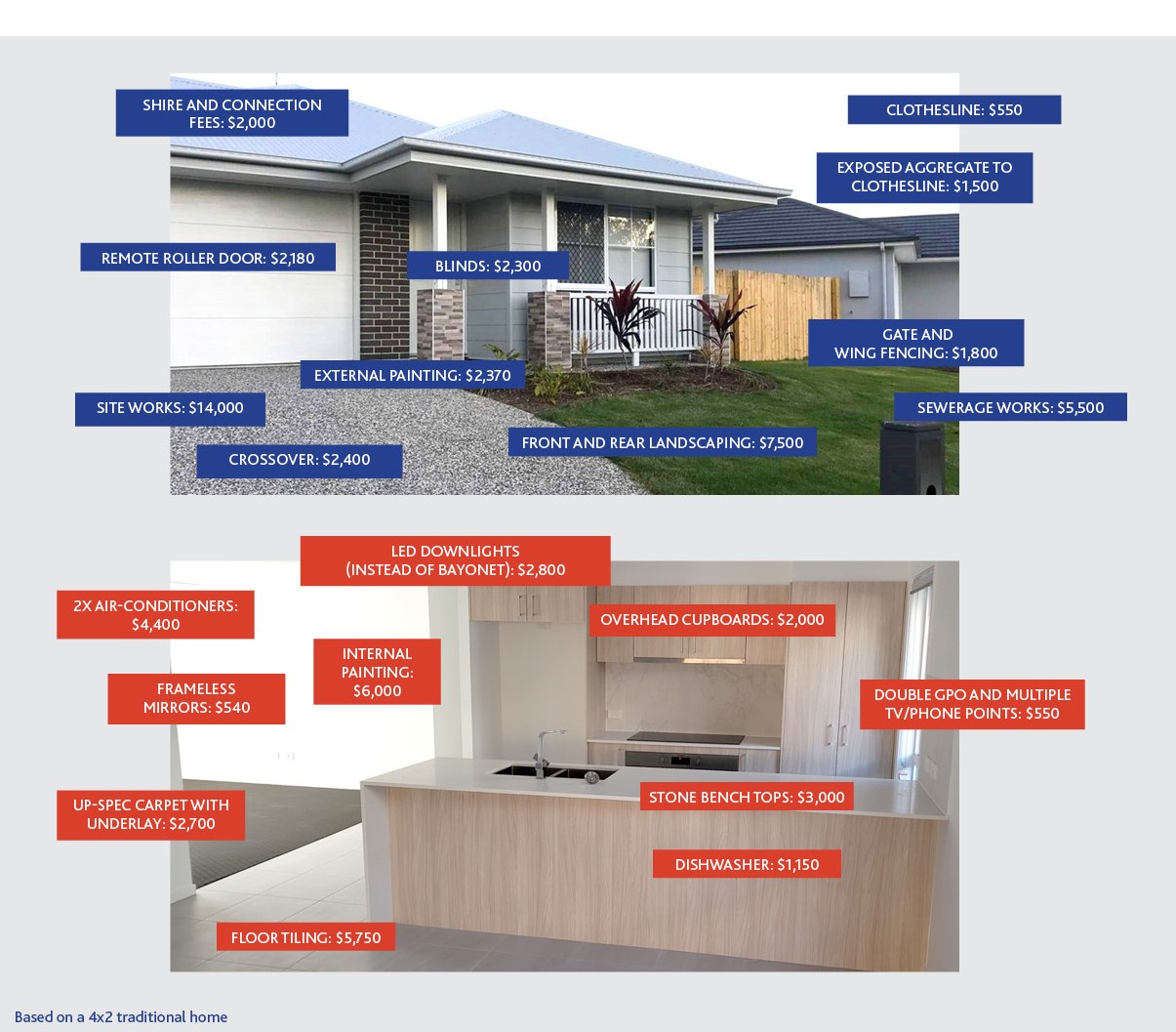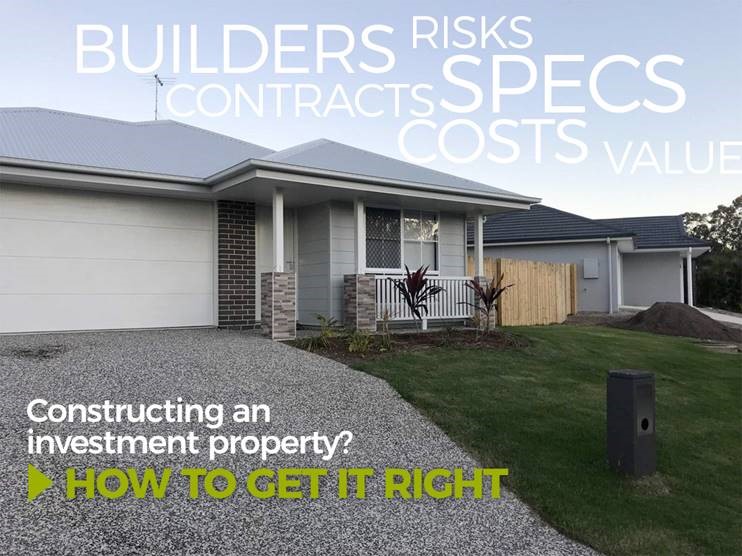But before you jump right in, as an investor planning for the future, it’s important that you do your research.
The challenge for most first and second time investors is knowing how to research and where to start. Especially when it comes to building an investment property.
In this blog I’ll try to simplify what to look for as you’re doing your research.
On the go? Here’s 30 seconds of take outs:
- If you’re researching new build investment opportunities, make sure you have a thorough understanding of your contract and what’s included.
- Check your specs carefully. If you’ve spoken to the builder about an item to be included in the build, and it’s not in the specs, it won’t be included.
- Look for fixed price or ‘turnkey’ contracts. In these contracts, the cost covers everything you need for a tenant to move into your newly built home. This means you don’t need to organise and pay for additional items. It also means you’re covered for any surprises that may occur in the construction phase.
Keep reading >>
As the 1988 CASTROL GTX2 ad slogan points out, ‘Oils Ain’t Oils’ and in the same context – Builders Ain’t Builders.
And what we mean by that is there are different builders for different markets; builders who build for the first home buyers’ market, investors market, up graders market, project home builders, custom home builders, retail builders, wholesale builders… and the list goes on.
So, when you engage a builder how do you determine value?
When you’re researching (mostly online) you might come across many house and land packages advertised. Usually listings on places like realestate.com.au. We call these listings ‘marketing hooks’. And the advertised packages often seem to be too good to be true, because they are.
When you take a closer look in the *Special Conditions / small print in the advertisement certain things may not be included because the builder representative will most likely be reluctant to release the specifications to the contract.
The building contract
I am, by no means, a contract expert. That’s a job for your conveyancer. But even a conveyancer brought in on new build contracts is only engaged to check over the land part of the purchase.
It really is up to you, the investor, to make sure you’re satisfied with the level of finishings and specifications included in the contract.
The building contract (as per Housing Industry of Australia, AKA HIA, standards) is made up of the following components:
- When the work is to be completed
- The scope of works
- The contract price
- How and when payment is to occur
- What happens if there are delays
- How to manage variations
- Any other matters that could lead to misunderstandings and disputes.
When assessing value, you’ll need to determine what is included in the contract as mentioned above the specifications (specs).

What is specs?
Specs is a written document forming part of your building contract. It describes, in detail, the scope of work, materials to be used and methods of installation.
The materials in your specs is presented as a literal list of everything that will be included. If you’ve spoken to the builder about an item to be included, and it’s not in the specs, it won’t be included. That’s why it is super import to ensure your contract includes a detailed and comprehensive level of specs.
Items you might like to include in specs [Standard Inclusions PDF]
Risks to builder
Another super important thing is to always confirm you have a fixed price contract. It’s common for builders to have allowances, or a set cost for specific works. For example, an allowance for if you hit rock when excavating footings.
If you go over the allowance, as the investor, you’ll need to cover costs over and above the contract price.
True turnkey / fixed price building contracts
As a ‘turnkey’ property, the cost covers everything required for a tenant to move in. This means you don’t need to organise and pay for additional items.
We call this ‘Rent Ready’.
It also means you’re covered for any surprises that may occur in the construction phase such as tree or rock removal, driveway crossovers, window treatments (e.g. roller blinds) floor coverings (e.g. carpet and tiles).
Specification to the contract / inclusions
Capital Property homes include everything. As specialists in the investor market, our homes are built to satisfy the needs of tenants. We liaise with property managers and tenants to determine what features are important and what can be improved. Based on feedback, our designs have adapted to feature wider living areas, extra storage facilities and stone benchtops.
Our investment properties are complete. While you might find a base house price cheaper online, you’ll probably also find that they make their profit from the variations that the investor makes. As the home is not as complete, there are many essential items that will need to be included before the home can be tenanted.
These variations may not be covered by your loan and you will pay out of your own pocket.
There are many things to consider when building – Need some help I know I did!
Click on the Capital Properties links below to find out more: Schedule a Free Discovery Session | Property Investor Workshops
Free investor tools: Sign Up to Our Switched-on Property Investors Program | Your free online property investment toolkit | How to determine value when constructing your investment property PDF






